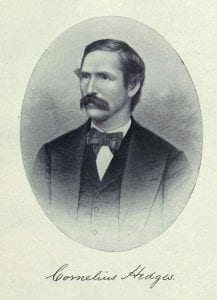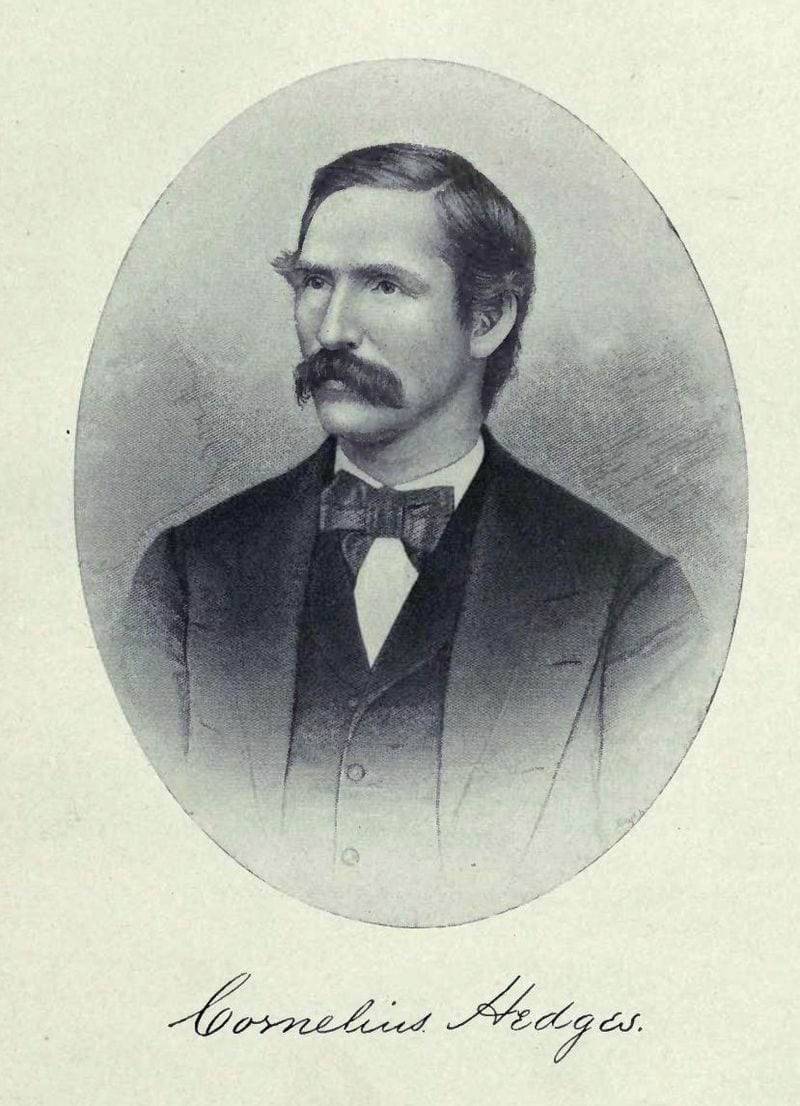
Cornelius Hedges, born in Westfield in 1831, was responsible for the establishment of Yellowstone National Park. (photo courtesy Westfield Athenaeum)
by Sarah Hunter, intern, WSU ’20
Home to nearly four hundred different types of animals and known for its supervolcano, Yellowstone made its name as the world’s first national park. The park sees over a million of visitors yearly.
What most people don’t know is that the person responsible for the establishment of this park was Westfield native Cornelius Hedges.
Hedges was born in Westfield on October 28th, 1831. His family lived on the corner of Broad Street and Hedges Avenue, which was named after his father, Dennis Hedges. During this time, Westfield was the center of the buggy whip industry, which is how the city got its nickname of Whip City. As a boy, he helped his father tend to their land and attended school at the Westfield Academy. He later attended Yale and Harvard Law, finishing school in 1855.
He married Edna Layette Smith in 1856 and the two moved out to Independence, Iowa. They lived there a short time there and Hedges opened up a law office and assisted with a newspaper. They stay in Iowa until 1864 when Hedges would send his family back to Connecticut while he took off for the gold fields of Montana. Hedges landed in the town of Helena, Montana and with the help of the local sheriff he was able to set up a law office and move his family out to the Montana territory in 1865.
In 1870, Hedges joined an expedition that Henry D. Washburn led through the area we know today as the Yellowstone National Park. Hedges is credited for coming up with the general plan for Yellowstone while Ferdinand Vandeveer Hayden is responsible for the actual boundaries of the park.
Hedges believed that the park should be for the public and was against private ownership. Nathaniel Lanford said, according to Karen Jones’s Unpacking Yellowstone, that Hedges’s suggestion “was met with an instantaneous and favorable response.” Yellowstone was established as a national park in 1872 and a peak within the park was named after Hedges.
After his return from the Yellowstone expedition, Hedges returned to his quiet way of life. He was made the U.S. Attorney for Montana territory by President Grant. He also served on the Montana Historical Society as well as a probate judge of the court in Helena.
According to an obituary record of Yale University graduates, Hedges died in Helena, Montana on April 29, 1907 after suffering a three week bout of nephritis, an inflammation of the kidneys. He is buried in Lewis and Clark County in Montana but his legacy is something Westfield should be proud of.








